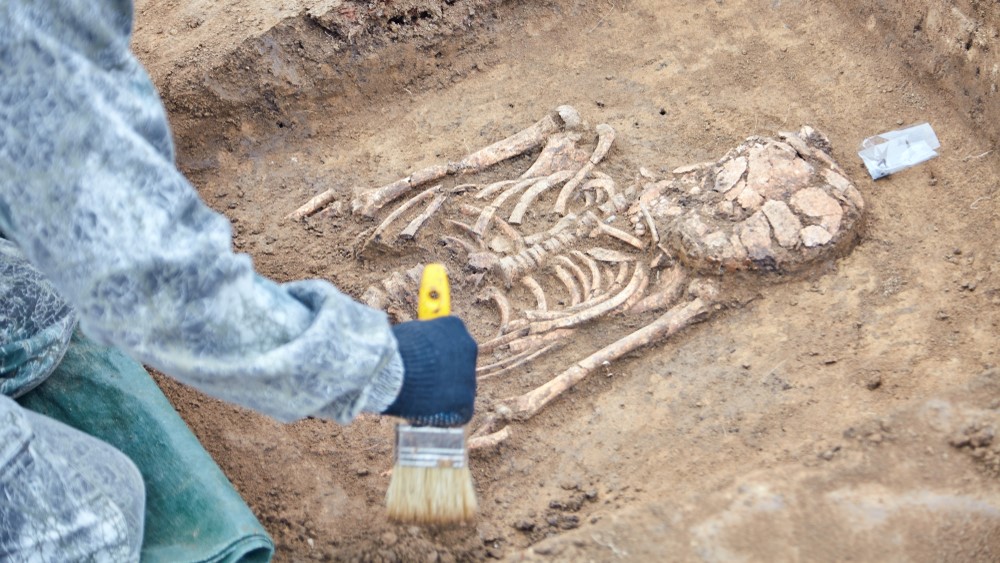Scientists from multiple countries collaborated on the investigation, combining historical scholarship and modern genetics to settle a case that had remained uncertain for generations.
Others are reading now
A long-debated archaeological puzzle has finally been resolved in Budapest, where researchers have authenticated skeletal remains discovered more than 100 years ago.
An international team has verified that the bones belong to Duke Béla of Macsó, a royal figure tied to both the Árpád and Rurik dynasties.
When it all began
According to ELTE Institute of Biology, work on the story dates back to 1915, when excavations at the Dominican monastery on Budapest’s Margaret Island uncovered the skeleton of a young man in the sacristy.
Early interpretations — based on burial placement, medieval sources and heavy trauma visible on the bones — led researchers to suspect the remains belonged to Béla, Duke of Macsó.
According to the period chronicles cited in the research, Béla, born after 1243 and killed in 1272, was the grandson of King Béla IV on his mother’s side and descended from the northern Rurik dynasty through his father.
Also read
The sword wounds
Austrian accounts from the 13th century claimed he was murdered by Ban Henrik “Kőszegi” and accomplices, with contemporary narratives describing how his sister Margit and niece Erzsébet recovered the mutilated body for burial at the monastery.
In the years after the discovery, the bones were transferred to anthropologist Lajos Bartucz at the Budapest University, where he documented 23 sword wounds, including critical blows to the skull.
His reports in the 1930s were the last public references before the remains vanished and were assumed lost during the war.
A rediscovery and a new team
The trail reopened unexpectedly in 2018, when postcranial bones were found in a wooden box inside the Hungarian Museum of Natural History’s vast anthropology collection.
The skull, meanwhile, had remained separately preserved at ELTE in the Aurél Török Collection.
Also read
That same year, researchers led by Tamás Hajdu of ELTE formed an international consortium involving anthropologists, geneticists, archaeologists, radiocarbon experts and other specialists.
According to the abstract of the scientific paper, their mission was to confirm whether the bones indeed belonged to the duke and to reconstruct the circumstances of his death using updated scientific methods.
The project carries unique historical weight. Besides the well-documented remains of King Béla III, scholars say no other nearly complete Árpád-dynasty skeleton is known.
The study also offers rare access to genetic material linked to the Rurik lineage. Teams from institutions in Vienna, Bologna, Helsinki, Harvard and Hungary all contributed to the work.
Life, diet and movement
Anthropological examination indicated the man buried on Margaret Island was in his early twenties, aligning with Béla’s reported age at death. Initial radiocarbon measurements produced a date slightly earlier than expected, prompting additional tests.
Also read
According to the research, results from the Nuclear Research Institute in Debrecen showed that high consumption of animal protein — including fish and possibly shellfish affected by older carbon sources — had caused a well-known reservoir effect.
Analysis of dental calculus yielded over a thousand microfossils. Wheat and barley starch grains, along with heat-altered particles, pointed to meals that included cooked semolina and baked wheat bread.
Strontium isotope findings indicated that the individual spent early childhood in the broader Carpathian Basin, with patterns consistent with the Vukovar–Syrmia region — historically part of Béla’s Macsó domain — before relocating in later youth, possibly toward the area of present-day Budapest.
A violent end revisited
Forensic specialists conducted a full reassessment of the injuries to understand the final moments of Béla’s life and compare them with medieval accounts.
They identified 26 perimortem wounds — nine to the skull and 17 elsewhere — inflicted during the same assault.
Also read
Patterns suggested three attackers: one approaching from the front and two from either side. The duke appears to have recognized the danger and attempted to defend himself. Cuts indicated the use of two weapon types, likely a sabre and a longsword, and showed that he wore no armour at the time.
The reconstructed sequence began with initial blows to the head and torso, followed by deep defensive cuts as he tried to block the attack. Once he collapsed, the assailants delivered lethal strikes to the head and face.
Researchers noted that the combination of intense force and choreography indicated both emotional aggression and premeditation, aligning with historical reports of his assassination in November 1272.
Sources: ELTE, Forensic Science International: Genetics, Science Daily


